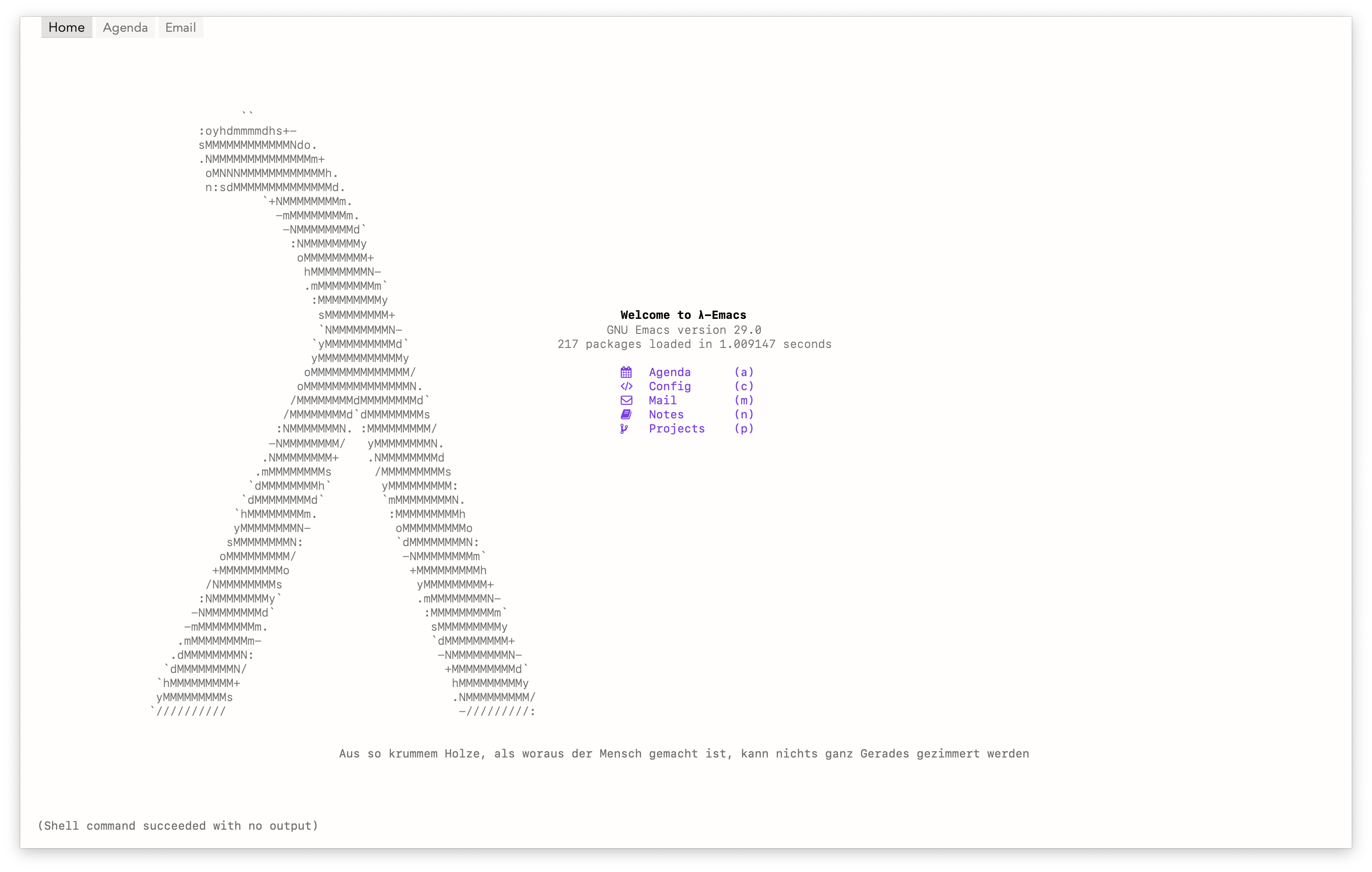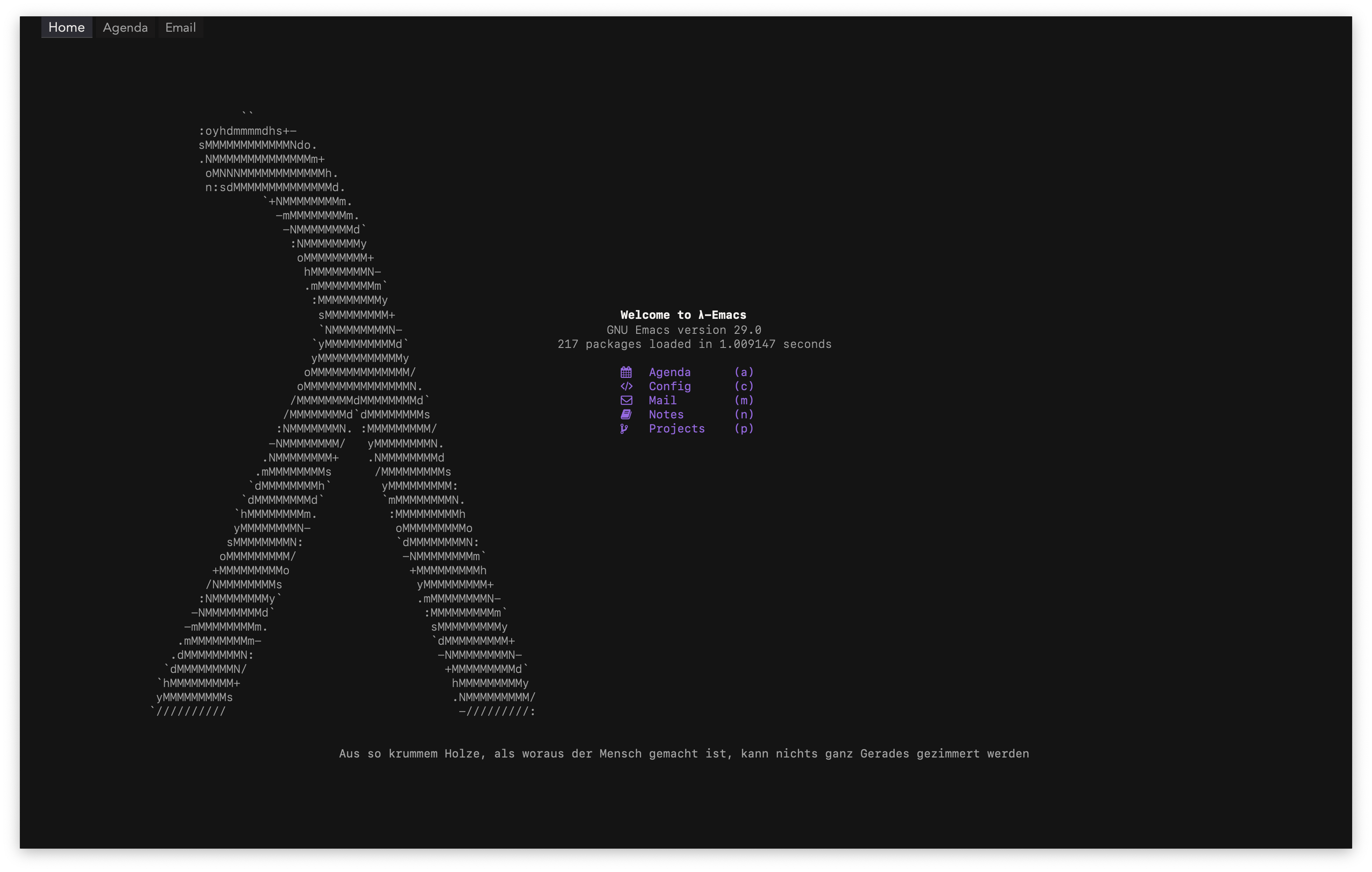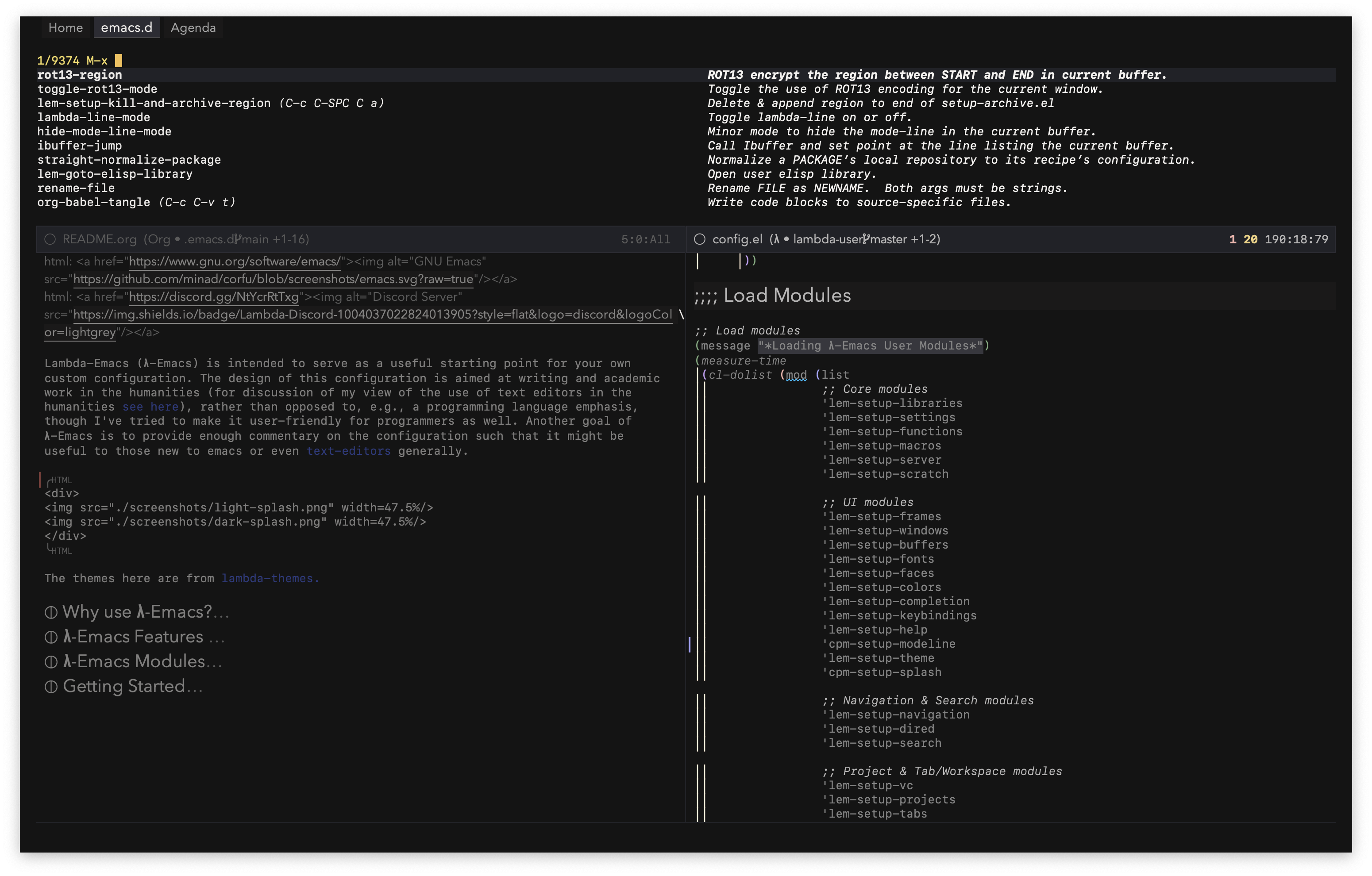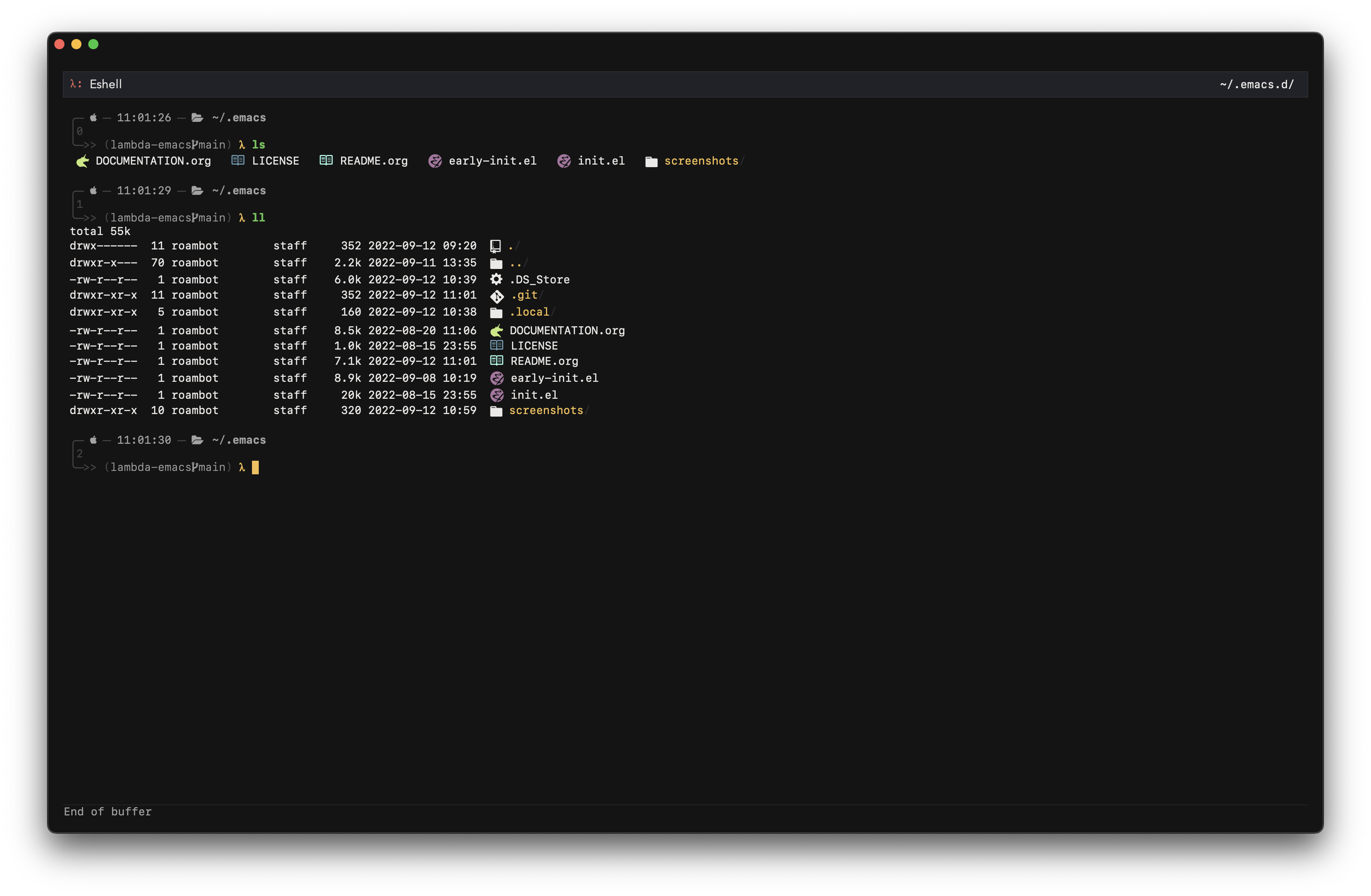

Lambda-Emacs (𝛌-Emacs) is intended to serve as a useful starting point for your own custom configuration. The design of this configuration is aimed at writing and academic work in the humanities (for discussion of my view of the use of text editors in the humanities see here), rather than opposed to, e.g., a programming language emphasis, though I’ve tried to make it user-friendly for programmers as well. Another goal of 𝛌-Emacs is to provide enough commentary on the configuration such that it might be useful to those new to emacs or even text-editors generally. Note that Lambda-Emacs is only compatible with Emacs 29+. However, parts of the configuration may easily be backported to older versions of Emacs.
The themes here are from lambda-themes.
Why choose this configuration over any of the other amazing Emacs “distros” out there, such as (if you use vim-bindings) spacemacs, or doom-emacs, or the more traditional configurations of Purcell, Batsov (prelude), Zhang (Centaur Emacs), the bmacs configuration of Bryan Gilbert (see also his literate starter kit) and Karl Voit’s config, John Kitchen’s scimax, Kieran Healy’s social sciences starter kit, and many others. Further helpful starts include sensible defaults or especially Crafted Emacs. There are also the recent stylings of Nicolas Rougier’s elegant-emacs and nano-emacs. Truly a surfeit of riches. So why another one? Here are three reasons. 𝛌-Emacs is largely an abstraction from my own config, which I wanted to make more easily available to others. I also want a clean but useful config to point my students to. Finally, setting this up is a useful way for me to think about how “best” to configure Emacs.
- Short start up time – emacs-init-time < 1 sec (though this may vary somewhat depending on your system)
- Uses the built-in package.el and package-vc.el for package management
- Comprehensive keybindings using bind-key
- Sensible defaults
- Dired with sensible colors and settings
- Completion with Vertico and related packages
- Lambda-themes, with toggles for dark/light mode & various other options
- A custom status-line, Lambda-line
- Extensive MacOS integration
- Tab-based project workflow leveraging the built-in project.el and tab-bar, with buffer-isolated tab/workspaces
- A configurable splash page
- A writing-centric configuration with great citation support, markdown, pandoc, dedicated functions for notes and note-taking (using denote), and settings for org-mode
𝛌-Emacs is a “modular” distribution of Emacs. It consists of a set of “setup” elisp files grouped according to the following areas (NOTE: these are still works in progress):
- Core: These files load essential libraries, useful functions, macros, and sane settings.
- UI: Primary settings concerning frame, window, and buffer interaction, along with fonts, faces, themeing, and completion all belong to this group.
- Navigation & Search: Useful navigation and search functions, plus setup and extension of the built-in dired file manager.
- Writing & Editing: Settings for spelling, citation (using citar and completion at point), dictionary, notes (using consult-notes), typesetting (LaTeX) and writing-specific modes (markdown and org).
- Org: Writing, Project management, TODOs, Literate programming. What doesn’t
org do? Since many people use Emacs almost exclusively for org-mode, it
warrants its own group. There are three modules. There is
lem-setup-org-base, which provides a base configuration. It also loads (optionally) two further modules,lem-setup-org-settingsandlem-setup-org-extensions. The former provides configuration for various built-in aspects of org, including the agenda. The latter provides a variety of useful additional packages, including styling withorg-modern. Note that no capture templates, etc., are set here. The interested user might want to consult my dotfiles org setup as well as the System Crafters tutorial. - Programming & Languages: Editing and Language specific settings.
- Shell: Configuration for compilation, shell, and terminal (vterm).
- Eshell: Configuration for the Emacs eshell
- Workspaces: Version control, tab settings, buffer-isolation, and other configuration for the built-in project.el and tab-bar.el
See the documentation (WIP) for further details.
- Clone lambda-emacs as emacs.d (NOTE: you should back-up your current emacs
config if you have one!):
git clone https://github.com/Lambda-Emacs/lambda-emacs.git ~/.emacs.d - Run Emacs – it will ask at startup if you want to generate a user configuration file, if you do it will generate that file and start up with some basic packages (this requires an internet connection and may take a little while to complete). If you do not create a config file Emacs will start with all the default packages in Lambda-Emacs (which will take time to fully download).
- Put whatever settings you prefer in your config file. This should include things like the font you prefer and whatever other variable settings you might like. For some hints see my configuration file and the list of variables in the docs.
- For further questions please look at the documentation or ask a question on the Lambda-Emacs discord.





